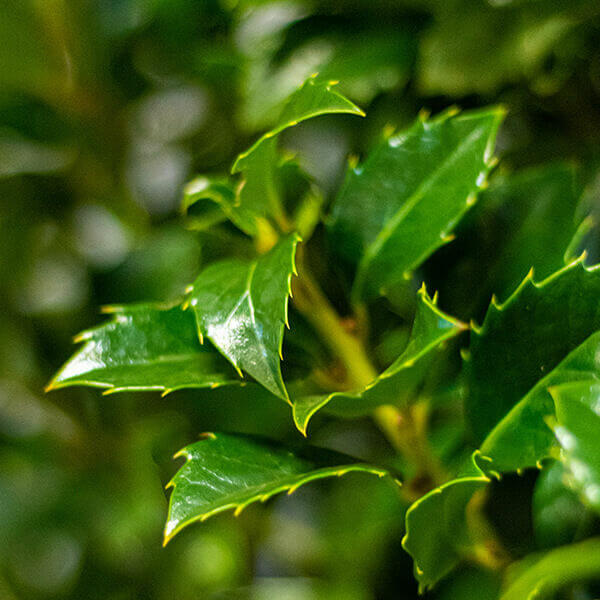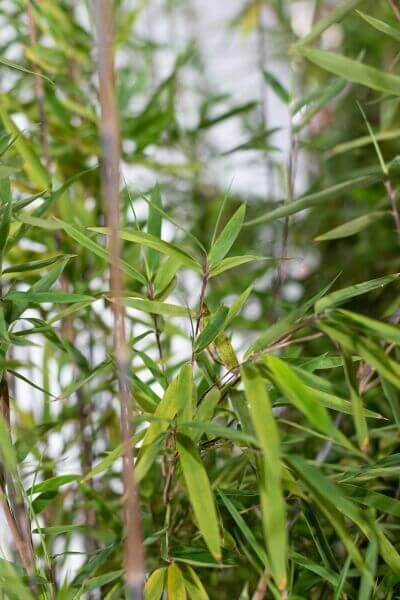Best Hedging Plants For Eco-friendly Gardens
Best Hedging Plants For Eco-friendly Gardens
Blog Article
Best Hedging Plants For Garden Privacy
Enhance your garden's appeal with lavish hedge ranges such as Yew (Taxus), Thuja, Laurel, Photinia, and Bamboo, commemorated for their structural integrity and environmental advantages.
Yew and Thuja offer evergreen protection and winter season resilience, while Laurel uses fast growth and broad, fragrant leaves.
Photinia includes seasonal charm with its lively red foliage, and Bamboo lends a low-maintenance, peaceful ambiance.
These hedges enhance air quality, decrease sound, and create tranquil, private areas.
Correct planting, spacing, and maintenance make sure energetic growth and eco-friendly harmony.
Check out how these lush varieties can raise your garden's beauty and well-being.
Secret Takeaways
Transform Your Garden With Lush Hedge Varieties
- Select Yew for its dense, evergreen development and unparalleled longevity.
- Choose Laurel for its quick development and broad leaves, guaranteeing fast personal privacy.
- Choose Photinia for its vibrant seasonal foliage, which turns a striking dark red.
- Use Bamboo for a low-maintenance, winter-hardy hedge with visual appeal.
- Area plants 2-3 per meter and prune frequently for optimum development and health.
Popular Hedge Plants
When changing a garden with rich hedge varieties, it's necessary to consider popular hedge plants such as Yew, Thuja, Laurel, and Photinia due to their unique characteristics and benefits.
Yew (Taxus) is highly esteemed for its longevity and dense, green growth, making it a prime choice for withstanding landscapes.
Thuja is noted for its evergreen foliage and robust winter resilience.
Photinia adds seasonal vibrancy with red leaves that darken over time, developing vibrant visual appeal.
Laurel provides fast growth and fragrant, broad leaves, ideal for fast personal privacy.
In Addition, Bamboo is an excellent option for atmosphere, providing a low-maintenance, winter-hardy choice that enhances the garden's aesthetic with its classy, swaying walking canes.
These selections accommodate a variety of horticultural needs and preferences.
Advantages of Garden Hedges
Garden hedges offer a wide variety of benefits, making them an important addition to any landscape. These natural barriers are affordable to implement and supply significant wind protection, boosting air blood circulation and contributing to noise reduction. The dense foliage of hedges like Thuja and Beech guarantees personal privacy by blocking presence, developing a peaceful and remote environment.
Hedges likewise play a vital function in microclimate guideline, supplying a steady environment that cultivates plant growth and lessens temperature level variations. Their intricate leaf structures filter pollutants, enhancing air quality and adding to a much healthier garden community.
Additionally, hedges stand out in sound decrease, taking in and deflecting sound waves to lower ambient noise levels. This dual performance of supplying both visual and acoustic privacy boosts the total harmony and visual appeal of any garden.
Planting and Upkeep Tips
For an effective hedge, precise preparation of the planting area is crucial. Ensure the soil has correct pH and drain to support strong root development.
Space the plants properly for the picked species. Water the hedge frequently throughout its preliminary growth stage, adjusting as needed with seasonal changes.
Execute a methodical pest control and illness avoidance strategy, utilizing chemical or organic treatments when required. Frequently examine for aphids, mites, and fungal infections.
Apply mulch to keep moisture and suppress weeds. Seasonal pruning promotes thick growth and air blood circulation, vital for plant health.
Following these standards will assist you cultivate a lively, well-kept hedge that enhances the charm of your garden.
Spacing and Trimming Guidelines
Spacing and Cutting Guidelines
Correct spacing and trimming are vital for cultivating healthy, aesthetically appealing hedges. Adequate spacing guarantees each plant gets sufficient nutrients, light, and airflow.
Follow these standards for ideal hedge maintenance:
- Spacing: Position hedge plants 2-3 plants per meter to encourage robust growth.
- Pruning Strategies: Regular pruning is important for keeping desired hedge height and shape. Trim brand-new development in summer and cut back older wood throughout winter.
- Seasonal Care: Adjust cutting methods and schedules according to seasonal requirements to ensure plant health.
- Hedge Height: Routinely monitor and trim to keep the desired hedge height and achieve uniform aesthetics.
Adhering to these steps will guarantee your hedge thrives, improving both the appeal and performance of your garden.
Selecting the Right Hedge
Selecting the Right Hedge
Choosing the suitable hedge involves assessing elements such as fully grown height, foliage density, and environmental strength. Effective hedge plant here choice needs understanding each types' development attributes and site-specific flexibility.
For instance, Yew (Taxus) provides outstanding longevity and dense growth, while Thuja is notable for its winter season strength. Furthermore, considering maintenance requirements is crucial; fast-growing types like Laurel or Privet need regular trimming, whereas low-maintenance options like Bamboo or Ivy might be more suitable for those seeking very little upkeep.
Ecological elements such as soil type, light availability, and wetness conditions ought to likewise assist the selection process. This cautious method makes sure the picked hedges will thrive, providing both visual and practical advantages to the garden landscape.
Shipment and Planting Guidance
To ensure your hedge plants thrive, they should be provided by specialized carriers and planted without delay upon arrival.
Follow these vital actions for successful planting:
- Soil Preparation: Enrich the soil with raw material to enhance drain and nutrient content.
- Planting Depth: Produce a trench twice the width and equivalent to the depth of the root ball.
- Watering Methods: Water thoroughly after planting, keeping the soil regularly wet but not saturated.
- Mulching: Use a layer of mulch to keep moisture and suppress weeds.
Customer Assistance and Service
Offered the essential role of prompt support in horticultural pursuits, our customer assistance team is available six days a week through telephone, e-mail, and social networks to offer skilled recommendations and swiftly resolve any concerns. Their dedication to fast response times makes sure customer fulfillment by fixing questions associated with plant health, optimal planting techniques, and upkeep schedules.

6 days a week
This detailed support group, reinforced by a stellar 9.3/ 10 client score, highlights our dedication to improving the gardening experience for each client.
Regularly Asked Questions
The Length Of Time Does It Take for Hedge Plants to Establish?
Hedge plants normally require one to 3 years to become totally established, with the precise period varying by types and growing conditions.
Effective care throughout this crucial duration is important for robust development. Consistent watering, watchful weed control, and proper fertilizer application are pivotal in promoting strong root advancement.
For instance, fast-growing species like Laurel may develop quicker, while slower-growing varieties such as Yew may take longer. Thorough maintenance accelerates the facility procedure, resulting in healthy and thick hedges.
What Are the Finest Hedge Plants for Privacy?
The question of the very best hedge plants for personal privacy involves assessing evergreen and deciduous choices.
Evergreen hedges like Thuja, Laurel, and Cypress supply year-round protection, ensuring continuous personal privacy.
On the other hand, deciduous hedges such as Beech offer seasonal personal privacy, shedding leaves in chillier months.
Secret upkeep ideas for privacy hedges consist of routine cutting, fertilizing in spring, and proper spacing-- generally 2 to 3 plants per meter.
Furthermore, constant watering and persistent weed elimination are important for promoting healthy, thick development.
Can Hedge Plants Draw In Wildlife to My Garden?
Yes, hedge plants can draw in wildlife to your garden by offering vital advantages like shelter, food, and nesting sites, thus improving local biodiversity. For instance, yew, holly, and laurel are outstanding for attracting birds, while ivy supports a variety of insects.
However, it's crucial to keep in mind that there are some downsides, such as increased upkeep to manage pests and routine maintenance. Carefully selecting and keeping hedge varieties can help stabilize these benefits and drawbacks, ultimately promoting a sustainable and lively community in your garden.
Exist Any Blooming Hedge Plants Available?
Yes, there are flowering hedge plants offered that can enhance the appeal of your garden.
For example, Elaeagnus, likewise called Olive Willow, produces fragrant white flowers in the fall, including a touch of elegance.
Photinia, another popular option, showcases vibrant red leaves that grow into a rich green, developing a vibrant visual effect throughout the seasons.
To guarantee these plants thrive, it's important to practice proper pruning methods and seasonal maintenance, such as trimming brand-new growth in the summertime and cutting back in the winter season.
These procedures will help preserve the health and visual appeal of your flowering hedges.
How Do I Avoid Bugs in My Hedge Plants?
To prevent insects in hedge plants, employ natural insect control approaches and maintain appropriate hedge care. Present beneficial bugs like ladybugs, which victimize harmful pests, to produce a well balanced environment.
Regularly inspect your hedges for indications of infestation and immediately get rid of any afflicted parts to avoid the spread. Ensure the health of your hedges by applying well balanced fertilizers and offering appropriate water.
Make use of mulching to maintain soil wetness and correct spacing to reduce plant stress and promote robust development. These practices collectively help in lessening insect problems and preserving a healthy hedge.
Conclusion
In essence, selecting the ideal hedge varieties such as Yew, Thuja, and Laurel can transform any garden into a tranquil haven. These plants supply year-round plant, boost visual appeal, and offer useful benefits like noise reduction and wind defense.
Correct planting methods, accurate spacing, consistent watering, and seasonal trimming are essential for optimum development.
Reliable shipment services and skilled customer assistance make sure a seamless experience from purchase to planting, making it simpler than ever to raise your outside space.
Garden hedges use a plethora of advantages, making them a valuable addition to any landscape. These natural barriers are cost-effective to carry out and offer significant wind defense, improving air flow and contributing to noise reduction. The dense foliage of hedges like Thuja and Beech ensures personal privacy by obstructing presence, producing a serene and secluded environment.

Pruning Methods: Regular pruning is important for maintaining desired hedge height and shape. Cut brand-new development in summertime and cut back older wood during winter.
Report this page